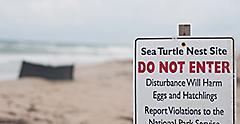Visiting Sea Turtle Sanctuaries In Florida: Vacation Guide
Find The Best Sea Turtle Sanctuary Near You In Florida
By Taylor Fuller | Published on September 12, 2022
From the early months of spring until October, Florida welcomes more than vacationers who want to enjoy the sunshine, salty air and warm ocean. It also welcomes sea turtles who are busy laying their eggs up and down the Florida coastline. Residents and experts do all they can to protect the eggs so they can have the best chance of hatching. While you are visiting Florida before or after a cruise, just search "is there a sea turtle sanctuary near me?" Chances are, you'll find one. There are a number of sea turtle sanctuaries in Florida, and they're always open to volunteers that want to observe and learn more about sea turtles. Here's everything you need to know about visiting Florida's sea turtle sanctuaries.

When Is Turtle Nesting Season In Florida?

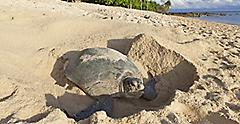
Female sea turtles nest every two to three years and will lay several nests (with about 80 to 120 eggs in each). About two months later, these eggs will hatch and all the hatchlings will dig out of their nest at the same time and head toward the water. The cool thing is that sea turtles imprint on their home beach. So, once they're adults, they'll return to that same area to lay their own eggs.
It's an amazing phenomenon, but it's not without its challenges. A lot of effort goes into not only keeping the nests safe from wildlife but also ensuring that the female sea turtles are able to lay their eggs. During turtle nesting season, it's important to avoid shining any lights on the beach at night as it could scare a turtle laying eggs. You may come across a blocked-off area on the beach during nesting season — this is to mark the turtle nest and deter people from trampling on them. And if you're wondering, "When is turtle hatching season in Florida?" it's about two months after an egg is laid. Allowing enthusiasts like yourself to see turtle eggs hatching well into the end of the year. It's really spectacular if you get to witness it!
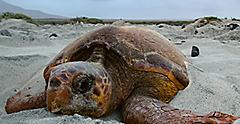
Book Now
Things To Keep In Mind During Sea Turtle Season In Florida
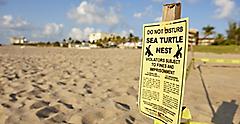
Remember that when you vacation to Florida to soak up the sand, sun and surf, you're sharing the beach with all sorts of wildlife, sea turtles included. You can take steps to ensure you're keeping them safe so the females can lay eggs and the hatchlings can return safely to the sea.
If you're lucky enough to see a turtle laying eggs, don't go near her. In fact, you should stand at least 30 feet away so you don't disturb her or the nest. Don't be tempted to turn on a flashlight or pull into a beachside parking lot and shine your lights over the sand. It can confuse both nesting females and hatchlings. And if you see markers or protective screening, walk around them and keep your pets on a leash. During the months of March through October, avoid walking on beach dunes and pick up any litter you may see on the ground.
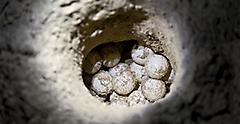
If you want to see them hatching, that's a whole other beast. Turtle nests usually hatch at night, and it happens quickly. There are usually about 120 hatchlings in a nest, so you'll literally see a wave of sea turtles running into the ocean. They prefer cold, wet sand as it's easier for them to move along the beach when they're first out of the nest.
If you're cruising in or out of Florida during June and July, take the opportunity to join a turtle walk. Environmental groups are permitted to organize turtle walks on the Florida beaches, led by a professional. Typically, flashlights and flash photography aren't permitted because sea turtles are born with the instinct to move toward the brightest direction. That's why it's so important to manage light pollution. If you witness a sea turtle nest hatching, you may see someone from a sea turtle sanctuary directing them to the ocean with a tiny flashlight! On a beach that's not surrounded by light pollution, hatchlings would be able to find their way themselves.
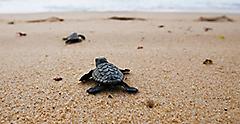
Visiting Sea Turtle Sanctuaries In Florida
Sea Turtle Op Headquarters
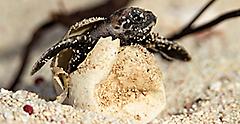
The Turtle Hospital
If you're looking for a sea turtle sanctuary in Miami, be sure to check out the Turtle Hospital. This rehabilitation center opened in 1986. It rehabs injured sea turtles and releases them back into their natural habitat. It's a working hospital so you have to be part of one of their Guided Educational programs to visit, but true wildlife lovers will find the behind-the-scenes look into the hospital fascinating. The tour lasts between 70 and 90 minutes, so plan ahead.
Miami Seaquarium
